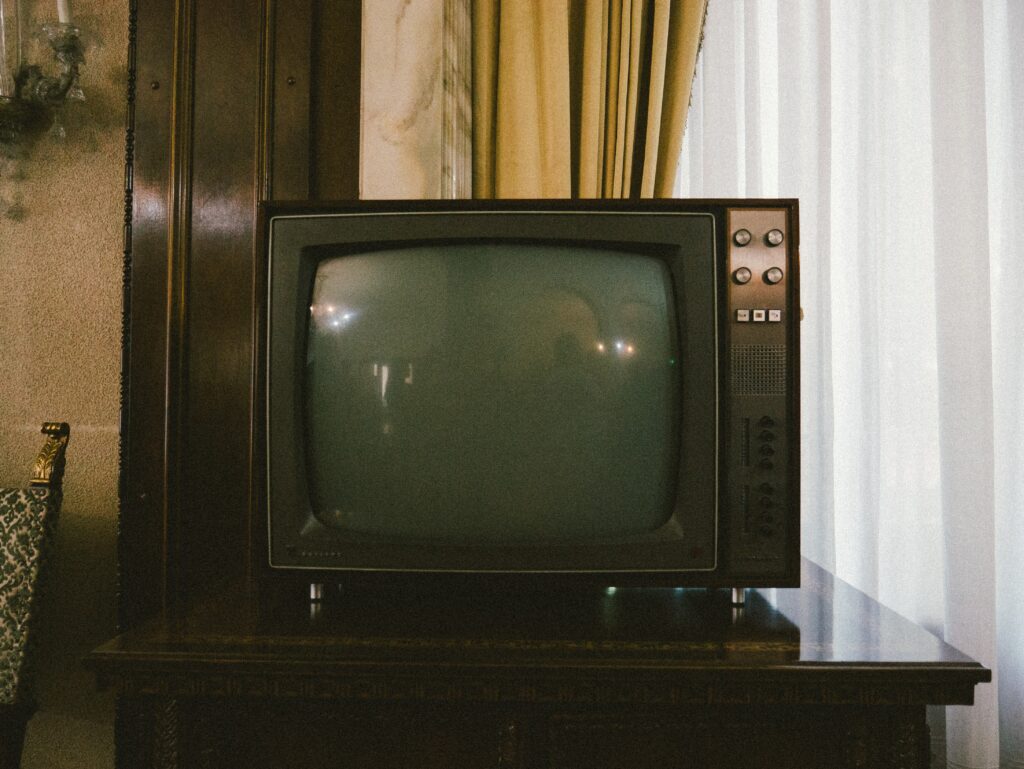Colin Thomas looks back at the early years of Channel 4 and S4C, and forward to forthcoming events that will assess the prospects for their continued success.
Public service broadcasting is in danger. Michelle Donelan, the new UK Culture Secretary, has gone on record as saying that the BBC’s licence fee is an ‘unfair tax which should be scrapped altogether’. Her predecessor Nadine Dorries planned to privatise Channel 4.
Cymdeithas yr Iaith Gymraeg decided on direct action as part of the campaign for a Welsh language television channel.
And so the 40th anniversary of both Channel 4 and S4C seems like a good time to remind Welsh viewers of some of the gains from what were in 1982 brand new channels. Both of them had idealistic origins. In response to Saunders Lewis’ ‘Tynged yr Iaith’ (‘The Fate of the Language’) speech, for twenty years Cymdeithas yr Iaith Gymraeg decided on direct action as part of the campaign for a Welsh language television channel.
Arriving for work in 1976 at what was then my employer – BBC Bristol – I found the entrance blocked. Cymdeithas members had broken in, vandalised an outside broadcast vehicle and were holding a sit-in at the main entrance. They patiently explained to me their sense of desperation and their conviction that, without a television channel in Welsh, the language was doomed.
By 1979 the campaigners seemed to have convinced the incoming Tory government, but when Home Secretary Willie Whitelaw said he had changed his mind there was outrage. Two thousand members of Plaid Cymru vowed to go to prison rather than pay their licence fee and the party’s leader Gwynfor Evans announced that he would starve himself to death unless the Welsh language channel was given the go-ahead.
Meanwhile, the campaign to keep the UK fourth channel out of the control of the ITV companies grew out of the Free Communications Group formed by ‘a growing number of journalists, programme and film makers unhappy with developments in their own industries’ – I was one of them – with ‘a shared anti-authoritarianism.’ Michael Darlow, a key figure in FCG, wrote: ‘We were not going to go away until we had a fourth channel that was more open and free, that provided opportunities for programme makers and voices of all kinds and did not exist simply to serve the ITV companies and their shareholders.’
Gofod i drafod, dadlau, ac ymchwilio.
Cefnogwch brif felin drafod annibynnol Cymru.
By 1980 it became clear that both the S4C and C4 campaigns had been successful. The Broadcasting Bill that was passed in that year was a vindication of the campaign for an independent fourth channel and on September 17th 1980, Whitelaw did another U-turn and Sianel Pedwar Cymru (S4C) was given the go-ahead.
Red Flannel, a women’s cooperative in Pontypridd, was now able to make its innovative documentary Mam; a brilliant young animator named Joanna Quinn could get funded – by S4C and C4 – to make Girls Night Out; Endaf Emlyn was able to begin to plan the filming of his masterpiece Un Nos Ola Leuad. And at last there would be a regular current affairs programme in Welsh – Y Byd Ar Bedwar was born.
Together with like-minded friends, I seized the opportunity too, working through the cooperative Teliesyn. Despite my background as a documentary director, S4C allowed me to produce and direct drama for the first time and I was astonished to find that when I proposed to Channel 4 that the history of Wales I was to produce via HTV should have two presenters with opposed perspectives, the response was an immediate Yes. So began The Dragon has Two Tongues.
There could have been tensions between the two new channels. ‘Should Channel 4 feel that it was not receiving sufficient funds, the relationship between Channel 4 and S4C could have been challenging,’ wrote Elain Price, ‘with both sides battling to ensure that they received their fair share.’ But, as she goes on to point out, there were co-productions between the channels and S4C ‘successfully embedded itself into the wider British landscape and the effective relationship between S4C and Channel 4 was a key component in that success.’
Has that success continued? That will be one of the issues to be raised at three forthcoming events. On November 1st and 8th at 5pm Y Drwm, the viewing theatre at the National Library in Aberystwyth, will be screening Channel 4 and S4C programmes and extracts from the first ten years of both channels. PUTTING WALES ON TELEVISION. C4 and S4C – the first ten years. CYMRU AR Y TELEDU. 10 mlynedd cyntaf S4C a Sianel 4. The screening at Chapter in Cardiff at 5pm on November 27th will be followed by a panel discussion.
To mark the BBC’s centenary year and in advance of the release of the IWA’s research on broadcasting regulations in Wales, the welsh agenda is releasing articles that examine broadcasting and the media in Wales.
All articles published on the welsh agenda are subject to IWA’s disclaimer.




